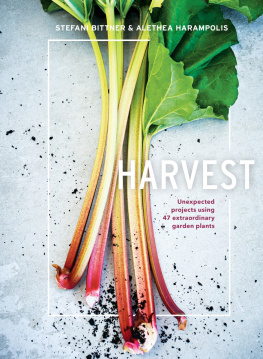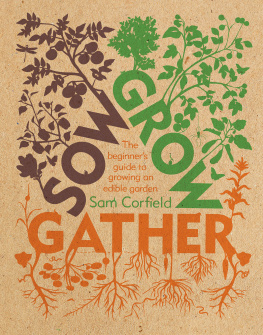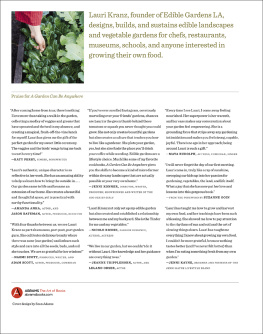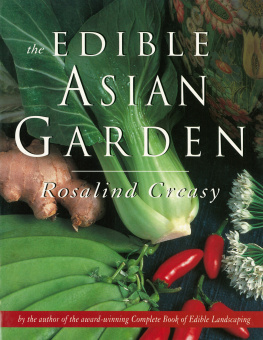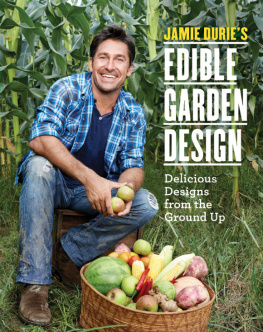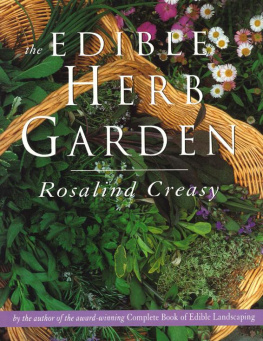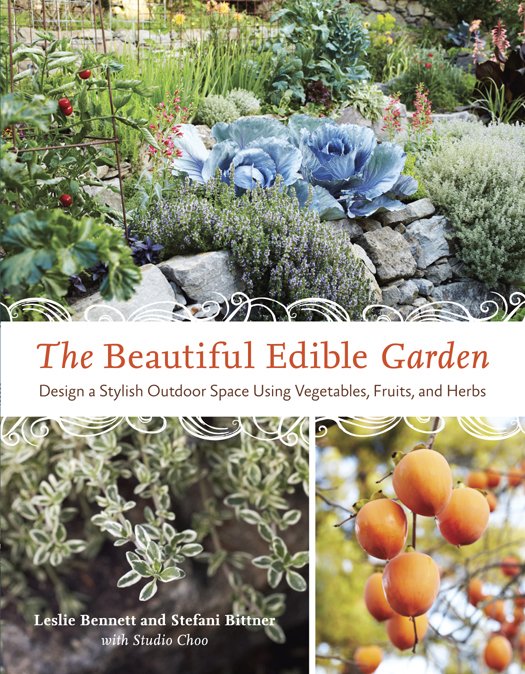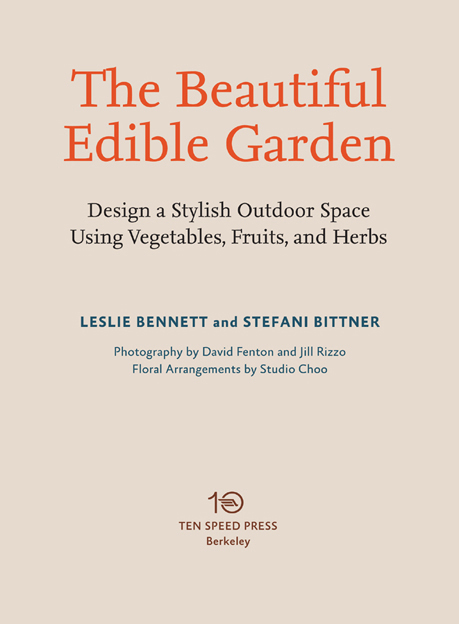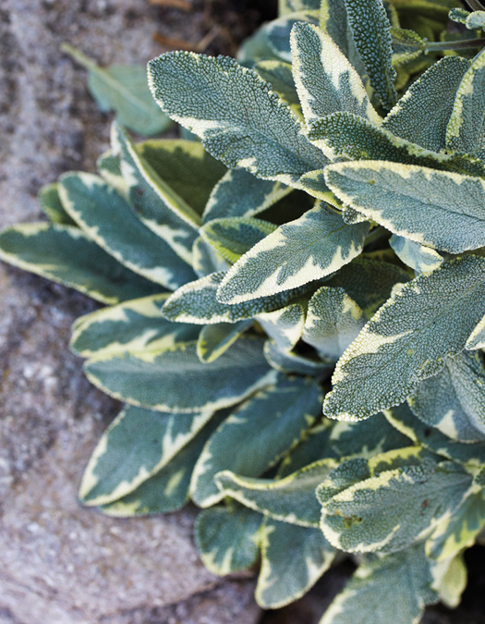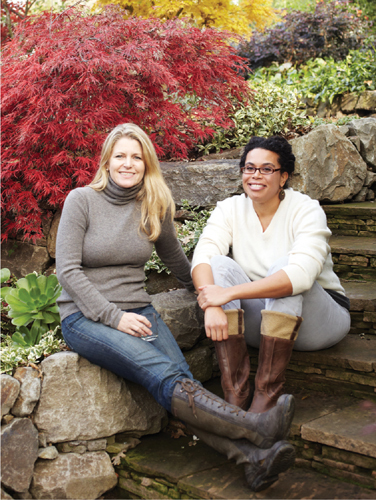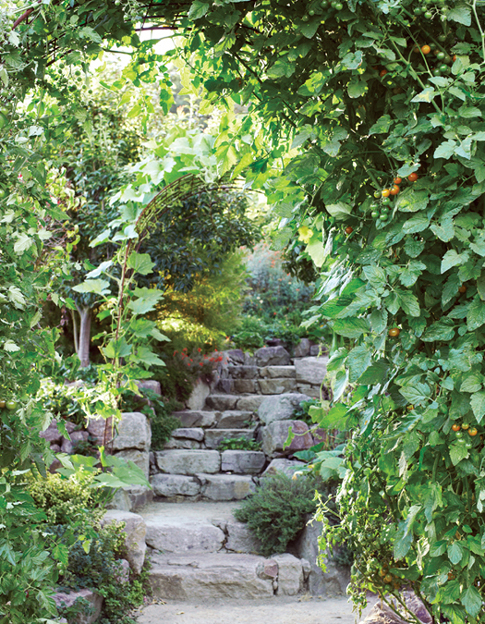Copyright 2013 by Leslie Bennett and Stefani Bittner
All photographs copyright 2013 by David Fenton, except as noted below.
Photographs copyright 2013 by Jill Rizzo:
All rights reserved.
Published in the United States by Ten Speed Press, an imprint of the Crown Publishing Group, a division of Random House, Inc., New York.
www.crownpublishing.com
www.tenspeed.com
Ten Speed Press and the Ten Speed Press colophon are registered trademarks of Random House, Inc.
Library of Congress
Cataloging-in-Publication Data
Bennett, Leslie, 1978
The beautiful edible garden : design a stylish outdoor space using vegetables, fruits, and herbs / Leslie Bennett and Stefani Bittner. 1st ed.
p. cm.
Design a stylish outdoor space using vegetables, fruits, and herbs
1. GardensDesign. 2. Plants, Edible. 3. Organic gardening. I. Bittner, Stefani, 1969 II. Title. III. Title: Design a stylish outdoor space using vegetables, fruits, and herbs.
SB472.45.B465 2013
635.0484dc23
2012030122
eBook ISBN: 978-1-60774-234-0
Trade Paperback ISBN: 978-1-60774-233-3
Design by Betsy Stromberg
v3.1
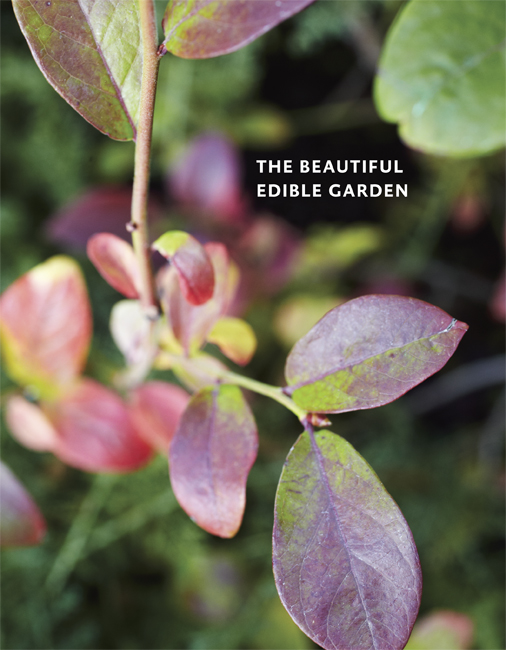
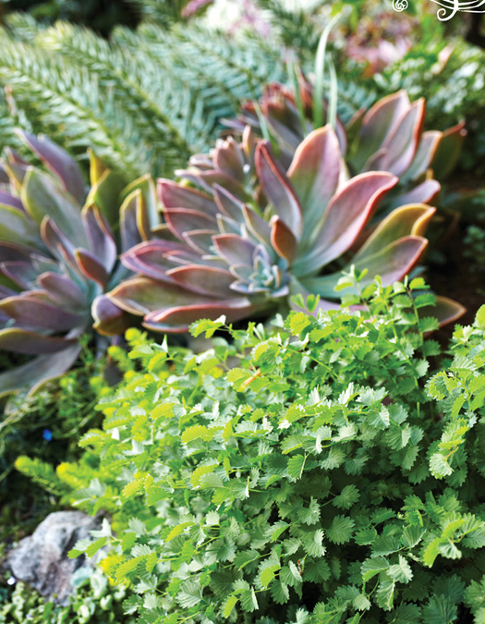
Edible salad burnet with ornamental succulents and euphorbia.

For our mothers, Christine and Garna, our partners, Linval and Jay,
and the next generation, Ana and Lauren.
La Crema sage.
CONTENTS

INTRODUCTION

Welcome to the beautiful edible garden.
This is a book about edible garden design. It is also a heartfelt invitation to join us in the practice of gardening. For us, gardening is a way to connect with the land, our community, and, perhaps most importantly, ourselves. It is also an opportunity to create and to be inspired. When you pursue food production and beauty together, you form meaningful spaces that have the power to both ground and uplift.
This book features ideas and projects that we have developed as Star Apple Edible + Fine Gardening, our San Francisco Bay Areabased edible landscape design service. Our approach is to redefine the plant palette to utilize edible and ornamental plants throughout your garden in a way that is both beautiful and productive. You can put this information to use in creating a space that includes vegetables, fruits, herbs, flowers, and other ornamental plants. We outline how to start, providing design principles and step-by-step guidance for a range of spaces, from front yards and backyards to smaller areas like decks, porches, and side yards, and even container gardens and window boxes.
We recommend that you read the as a reference in planting and maintaining your edible garden throughout the year.
For further inspiration, weve included photographs and sidebars throughout the book from our book partners, Jill Rizzo, Alethea Harampolis, and David Fenton. Photographers David and Jill capture the simple, intangible beauty of the garden and its harvests. At their floral design business, Studio Choo, Jill and Alethea highlight the beauty of the natural world in unexpected floral designs. Their sidebars include instructions for simple ways to utilize edible and ornamental plants from your garden as creative arrangements in your home.
This book is meant to provide general concepts for designing a garden that incorporates edible plants, so we do not include sowing times or specific vegetable- or fruit-planting guidelines because these differ depending upon the climate zone you live in. Instead, we encourage you to use this book along with a vegetable- and fruit-growing guide that covers those specifics. Where we can, we offer multiple plant choices to fit most climate conditions and garden styles so that you can select plants from our suggestions as well as search for other plants on your own.
Once your eyes are open to this new way of thinking about edible plants, youll start to see the potential for beauty and food production everywhere you look. Most important, have fun and enjoy the transformation that is about to take place in your garden.
Stefani and Leslie
ONE

Principles for Successful Edible Garden Design
You know you want to grow food, but you dont live on a farm and you dont want your front or backyard to look like one. You want to create an edible garden, but you also want it to be beautiful. So where, and how, do you start? In attempting to create a space that reflects good landscape design and supports sustainable food production, it quickly becomes clear that we are straddling two different worlds. In this chapter we will share with you the principles from both small-scale organic farming and landscape design that are necessary to create a beautiful edible garden. Whether you are making changes to your existing garden or making plans for a new one, these ideas provide the fundamentals you need to approach your own garden space.
Weve all seen the enthusiastic vegetable gardener whose yard overflows with corn, tomatoes, cucumbers, and zucchini. A garden like this is definitely productive; however, these summer vegetable favorites are all annual plants that will live and die within a single season. There will be a short stage in midsummer when the garden is green and full, but these annual vegetables are not enough to keep the garden looking good throughout the year.
In order to have an edible garden that is attractive and productive year-round, youll need to expand your focus beyond the typical vegetable garden that most of us are familiar with. By using basic design principles you can create a meaningful, enjoyable space where fruits, vegetables, herbs, flowers, and ornamental plants thrive together. The four major considerations for creating a beautiful, productive garden are (1) establishing a pleasing, balanced overall look; (2) arranging plants for both utility and aesthetics; (3) using a mix of ornamental and edible plantings for year-round beauty and production; and (4) maintaining a unified design style throughout the garden.


